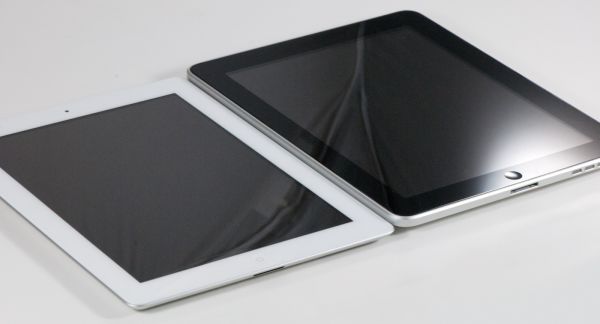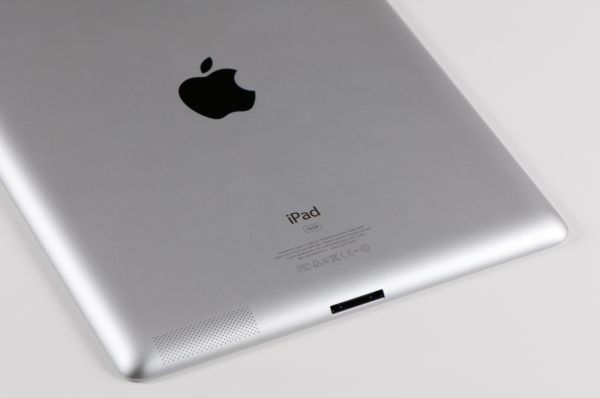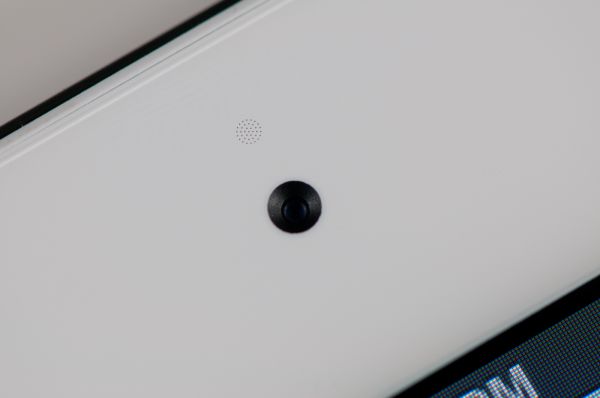
Sure, you can edit your iPhone photos using any of the million desktop photo applications out there. But why bother with all that syncing when great editing tools can be loaded to the phone itself for just a couple of bucks? Sketch Me, Color Splash and FX Photo Studio are three great places to start if you want to add a creative twist to your photography while on the go.
Sometimes it's easy to forget there are thousands of cool apps that extend the built-in features of your iPhone or iPod touch, and photography apps are one category I've been slow to adopt.
After all, I have a decent built-in camera for snapshots and video in my iPhone 4 already, and if I want to edit the photos I take, I can do it in iPhoto when I import them to my Mac ... or in Adobe (Nasdaq: ADBE) Photoshop Elements, or Pixelmator.
And yet, there are two reasons you need to start exploring camera-focused apps right now:
- The whole point of your iPhone or iPod touch is mobility, and camera apps provide you with on-the-go tools you can use right from the palm of your hand, and
- these apps give you focused tools to do cool things like turn photos into sketches.
Besides, who has the free time to actually sit down in front of their Macs and edit photos these days anyway?
As it turns out, I'm finding that I'm more likely to wildly enhance photos on my iPhone than even bother importing them into iPhoto in the first place.
Here are three that I consider must-have photo enhancement apps -- but know that there are many other fine apps that can achieve similar results.
If you've been stuck in a built-in Camera App rut, start here.
Etch a Sketch
Sketch Me!, an app from Bluebear Technologies, is available for 99 US cents at the App Store.


Sketch Me!
Sketch Me! is a super-easy-to-use gem of an app that does exactly what it says it does. It works best, I believe, with close-up portraits, but it can also yield some surprising results with bigger canvases.
To get it started, you can take a photo from within the app itself or load one from your Camera Roll on your iOS device. Simply loading the photo kicks the app into gear, and it'll strip out the color and turn edges into what appear to be hand-drawn pencil lines. Often enough, the default looks great, but you can edit the results by tapping a little "gear" icon, which will give you slider controls for blur radius and effect strength, along with a split-screen option that will let you see the changes compared to the original as you make adjustments.
Along the bottom, there are six little circles that are easy to miss noticing -- these are preset sets of sketch types, and tapping them will sketch your photo in different ways. If you want to play with color, there's a color brush, but for the most part, I've ignored the feature. I go to Sketch Me! to create instant sketches. Oh, there's
Facebook integration too, but the ability to take a snapshot of a cool event and then immediately sketch it and send it via the app via email to a friend can generate a nice surprise on the receiving end. To send it via MMS, you have to save the sketched file to your Camera Roll library on your iOS device ... and then MMS it from there.
World of Color
Color Splash, an app from Pocket Pixels, is available for 99 cents at the App Store.


Color Splash
When I first saw the Color Splash icon of a black and white hand holding a bright green apple, I had the impression that Color Splash was all about adding color to photos. I was mistaken, and in retrospect, I'm glad I was: Instead of adding color, you simply remove all color to create a black and white photo ... and then paint the color back into the areas you want to add color. It represents a different way of thinking about your photos, and your best results will come when you actually make your brain work for a second, teasing it into recognizing how a splash of color can really pop in a photo.
The first thing you want to do with Color Splash is watch the built-in general tutorial video. Some dude with an interesting accent will walk you through the basic process, and with a little practice and patience -- as the guy says in the video -- you really can finger paint your way around a photo by zooming in and out. In addition to finger painting color back into a photo, you can toggle over to finger paint the black and white back in -- handy when you make a mistake.
Either way, there's an undo button, which you'll use until you get the hang of it. One more thing: It's cool to slowly push your finger along an edge and see color bleed back into the image.
Social media posting? You bet, for Facebook, Flickr and Twitter. Emailing, yes, definitely, and for MMS ... head back to your Camera Roll to get that job done.
Special FX
FX Photo Studio, an app from Macphun, is available for $1.99 at the App Store.


FX Photo Studio
FX Photo Studio provides 181 different filters for just a $1.99. I find that pretty amazing, especially since each of the filters has a slider control that changes the strength of the effect.
The filters give you things like crumpled paper, rough fabric, yellow glow, night vision cam, stencil posters, grunge rays, tilt-shift, blurs, neon lights, old film frames, and many more. At first glance, they are a bit daunting. Fortunately, the app is snappy and quick, so you don't have to wait long for the filters to take effect.
You will, of course, find several that you really like, and these you can add to your favorites, making it easy to find what you want. Feeling playful? Tap the "dice" button in the upper right and get a random effect. Tap it again for a new one. It's a good way to find surprising filters for a photo that you might not have considered on purpose.
You can also navigate through them by categories, like Art, Blur, Color Fantasy, Color Temperature, and the like. Again, handy. There's even simple filters, like "Photo Border 2" that gives you a white paper-like raised border effect. It's quite nice, actually. Tasteful, even.
Beyond the high-profile filters, FX Photo Studio is packed with some important other tools, like the ability to crop your photos, rotate them, or apply a gamma filter. You can save the photos to your photo album, a documents area, or the clipboard for pasting. Social media sharing gets built-in action with Facebook, Twitter, Flickr, tumblr., and, of course, old-school email. Seriously, for $1.99, you can't go wrong.
All in All, You Need Some Photo Apps
Perhaps the most important takeaway of having a few of these kinds of apps is that they'll train your brain to remember that you can mess around with your photos. And maybe even frame them with some of these filters and effects in mind so you've got an interesting project right from the moment you tap the shutter button.
These three are definitely worth exploring, but don't let that stop you -- there are plenty more apps in the Apple (Nasdaq: AAPL) App Store that are sure to cover your individual way of seeing the world.













 The
The 




 It’s pretty obvious that we are getting the otherwise viral
It’s pretty obvious that we are getting the otherwise viral 






 The Pwn2Own
The Pwn2Own  As part of their weekly sale Play-Asia.com is offering MMA game, Undisputed 2010 at Rs. 689. We've reviewed it and at that price, it's an utter steal.
As part of their weekly sale Play-Asia.com is offering MMA game, Undisputed 2010 at Rs. 689. We've reviewed it and at that price, it's an utter steal. Remember Winamp? Yeah, that music player software we all used back in the day, and one that some still use today. Well, Nullsoft have been pushing hard for the Android version recently, and it was in the beta stage for a while now, but it finally has a stable release.
Remember Winamp? Yeah, that music player software we all used back in the day, and one that some still use today. Well, Nullsoft have been pushing hard for the Android version recently, and it was in the beta stage for a while now, but it finally has a stable release. Xmi launched their V 1.1 Capsule speakers a couple of months back. Their previous X-mini Capsule Portable Speakers that we tested were decent in terms of
Xmi launched their V 1.1 Capsule speakers a couple of months back. Their previous X-mini Capsule Portable Speakers that we tested were decent in terms of 


 VMware, the virtualisation and cloud infrastructure specialist, has launched its VMware View app for the iPad, enabling it to run its program on the device. The VMware View software allows users to remotely access virtual Windows desktops through the device, as well as data from anywhere. Best of all, the app comes free of cost!
VMware, the virtualisation and cloud infrastructure specialist, has launched its VMware View app for the iPad, enabling it to run its program on the device. The VMware View software allows users to remotely access virtual Windows desktops through the device, as well as data from anywhere. Best of all, the app comes free of cost!



 A team of Stanford researchers have come up with "full duplex" radios that can talk and listen at the same time -- a feat that enables communications simultaneity over WiFi networks. Cutting through existing WiFi congestion could double network speeds and capacities, encourage ambitious new projects -- such as citywide WiFi -- and even help prevent plane crashes.
A team of Stanford researchers have come up with "full duplex" radios that can talk and listen at the same time -- a feat that enables communications simultaneity over WiFi networks. Cutting through existing WiFi congestion could double network speeds and capacities, encourage ambitious new projects -- such as citywide WiFi -- and even help prevent plane crashes. Samsung has further expanded its Galaxy brand of Android devices this week with the introduction of three new handhelds, each running various forms of the Android operating system. It's added the Galaxy S II, the Galaxy Mini and the Galaxy S WiFi as an iPod touch competitor. But will Samsung be able to maintain line cohesion as the Android OS evolves and fragments?
Samsung has further expanded its Galaxy brand of Android devices this week with the introduction of three new handhelds, each running various forms of the Android operating system. It's added the Galaxy S II, the Galaxy Mini and the Galaxy S WiFi as an iPod touch competitor. But will Samsung be able to maintain line cohesion as the Android OS evolves and fragments?


 Sure, you can edit your iPhone photos using any of the million desktop photo applications out there. But why bother with all that syncing when great editing tools can be loaded to the phone itself for just a couple of bucks? Sketch Me, Color Splash and FX Photo Studio are three great places to start if you want to add a creative twist to your photography while on the go.
Sure, you can edit your iPhone photos using any of the million desktop photo applications out there. But why bother with all that syncing when great editing tools can be loaded to the phone itself for just a couple of bucks? Sketch Me, Color Splash and FX Photo Studio are three great places to start if you want to add a creative twist to your photography while on the go.




